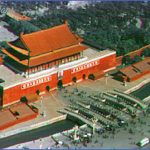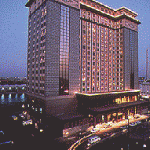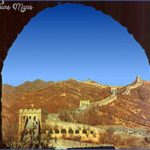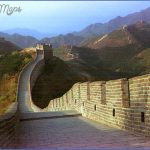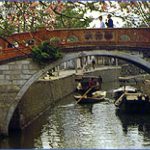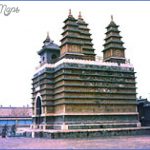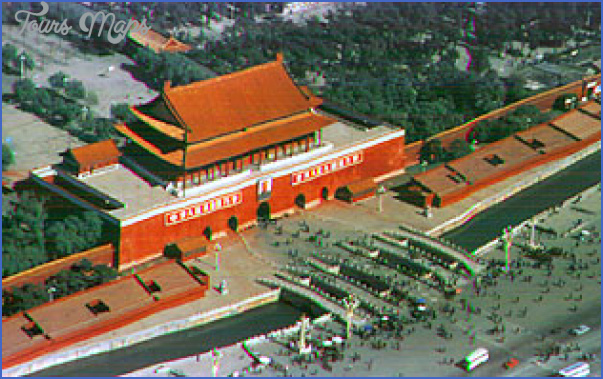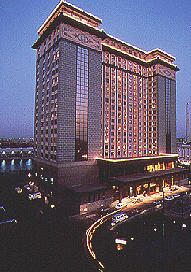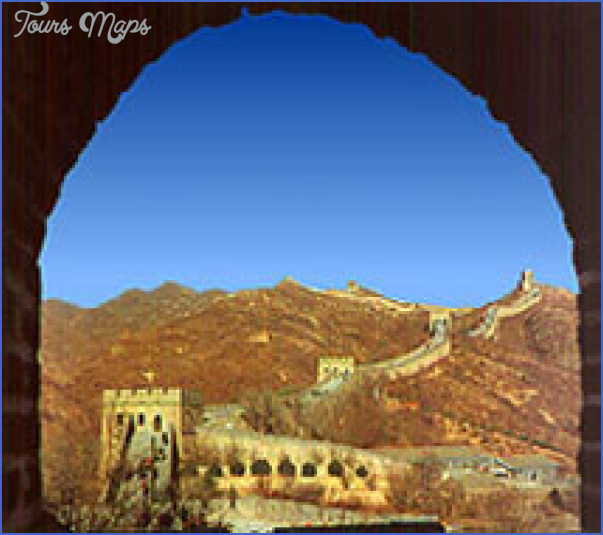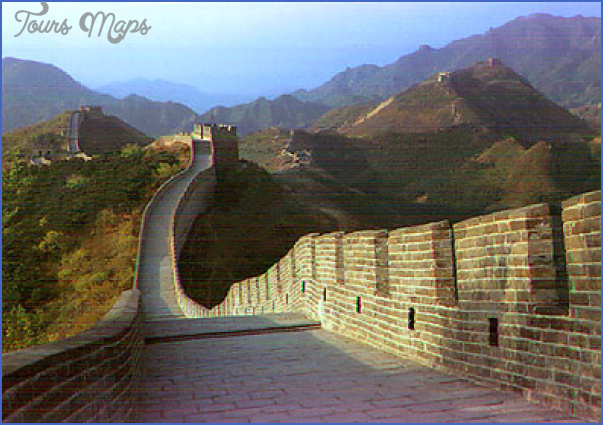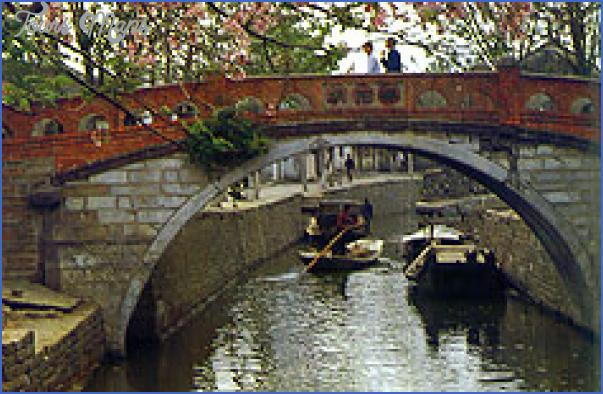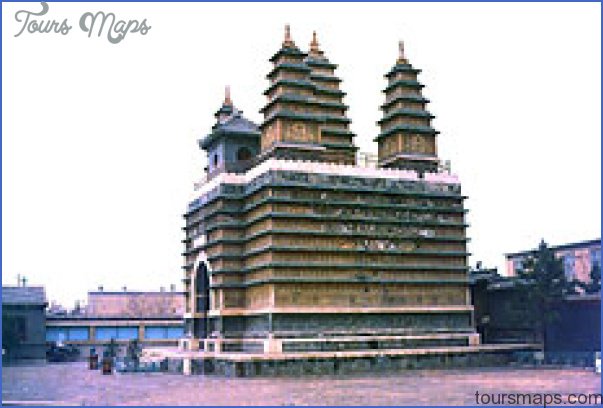To the east of the Kaiyuan Si temple is the Museum ofthe Flistory of Foreign Trade (founded 1959). It is divided into three sections: in the first section is a 24m/26yd long, 9m/10yd wide sailing ship from the Song period (960-1279). It was discovered in 1974, near the port of Houzhu in Quanzhou Bay about 10km/6 miles south east of the city. The second section displays hundreds of sculptures and stone tablets with inscriptions in old Chinese, Latin, Syrian and old Arabic; they date back to the Song and Yuan era (10th14th c.). In the last section over 300 ceramic pieces are displayed; these were crafted in Quanzhou from the 10th c. onwards and were intended for export.
Surroundings The 490m/1608ft high Mountain of Clear Springs is also known as the Beishan (north mountain), its name being taken from Quanzhou “city of Mountain of Clear springs”. It is said that there were once many Daoist temples here. Springs (Qingyuan The 5m/ 6ft high Flock of Laotse (Laojun Yan), a figure ofthe philosopher, dates from the Song period (960-1279). In a buildingontheAmitabharock(MituoYan),can be seen a tall statue of the Amitabha Buddha. Ninth Day The Ninth Day Mountain is situated 5km/3 miles to the west ofthe city on Mountain the bank of the Jinjiang River. Even in the Song period it was a popular goal (Jiurishan) 0f pilgrims. According to tradition many people moved to Fujian from the north in the 3rd and 4th c. Every year on the ninth day ofthe ninth month of the moon, the people came to Jiurishan to look in the direction of their home and this has given the mountain its name.
Theslopes ofthetwin-peaked mountain are decorated with morethan70 inscriptions, some of which are the work of poets who came to this place. Thirteen of these inscriptions are in memory ofthe sacrificial ceremonies which the Governor of Quanzhou held here between 1104 and 1266 to beg the gods to protect the Chinese traders at sea.
The western peak is crowned with a 4.5m/15ft high Buddha sculpture on a lotus-flower throne, dating from the 10th c.
On the Mountain of Souls (Lingshan) on the eastern edge of Quanzhou, are buried two students of the prophet Mohammed. They came here in the early 7th c. to spread the word of Islam. Behind the graves is a marble plate dating from 1323 inscribed in Arabic.
The bridge, erected in the years 1053 to 1059, which spans the Luoyang river 10km/6 miles to the north-east of the city is 843m/2765ft long and 7m/23ft wide. The pavilion on the middle of the bridge is covered with many stone tablets, with inscriptions up to 1000 years old. The 46 pylons were part of the original structure which was seriously damaged by an earthquake in 1607.
In the little village of Shijing stands the House of General Zheng Cheng-gong (42km/26 miles to the south of Quanzhou). He was born here in 1624. Zheng freed Taiwan from the Dutch rulers on February 4th 1662 and died only three months later. His body was buried in the family graveyard of Shuitou, some 10km/6 miles to the north of this house. In 1962 the house was converted into a museum in order to keep the memory of the national hero alive.
Museum of the History of Foreign Trade Haiwai Jiaotongshi Bowuguan Photo Gallery
Maybe You Like Them Too
- The Best Cities To Visit in The World
- World’s 10 Best Places To Visit
- Coolest Countries in the World to Visit
- Travel to Santorini, Greece
- Map of Barbados – Holiday in Barbados

